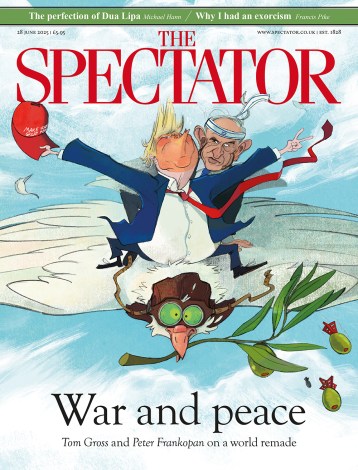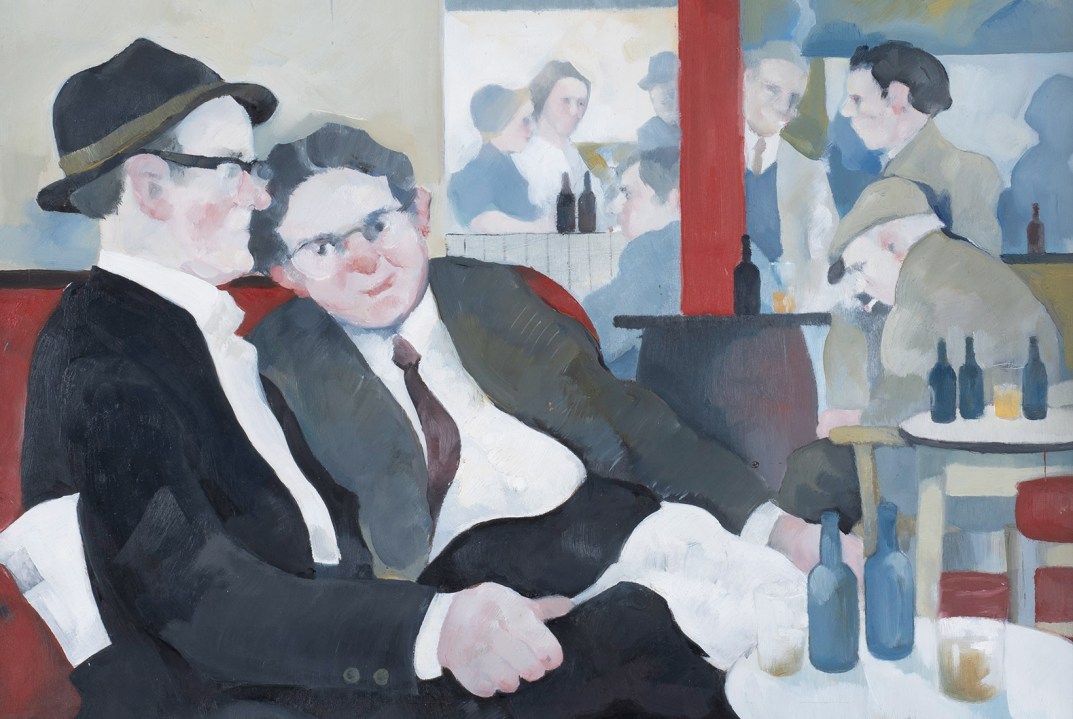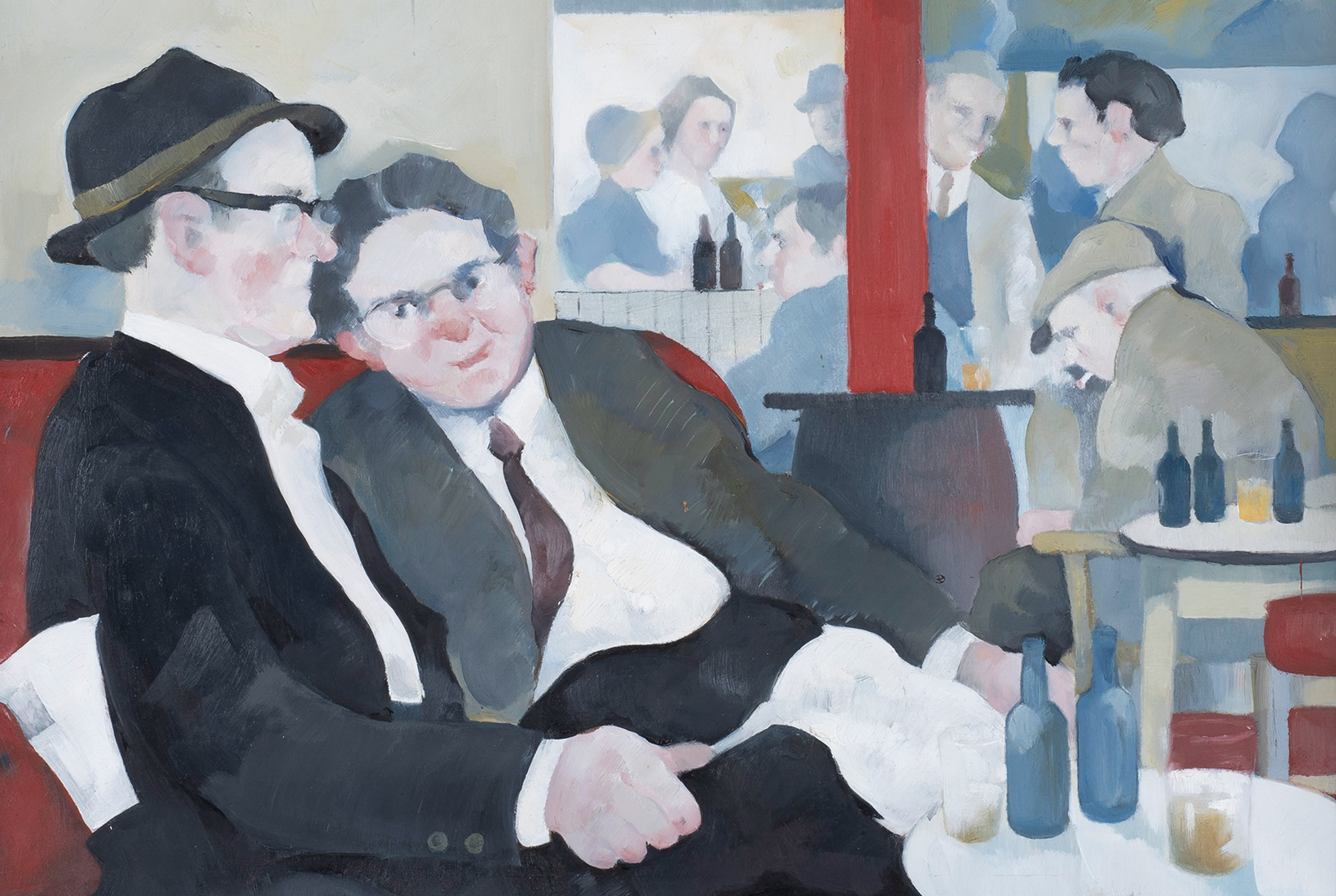Artists’ estates can be a curse on a family. The painter dies, leaving the house stuffed with unsold canvases. What to do? If he or she has a dealer, they will drip-feed work on to the market with varying degrees of success. If the artist is famous there’s no problem; any unsold work will be fought over. If middlingly successful, shifting it can be a slog. But if unsuccessful — better still, completely unknown — the equation changes. When the art market discovers a ‘secret artist’, their estate acquires the cachet of a hoard.
Such a hoard came to light three years ago in the Warrington home of former boxer, unskilled labourer and sometime gravedigger Eric Tucker. On his death aged 86 in July 2018 Tucker’s family found his end-of-terrace council house crammed with 400 paintings, piled on beds, on top of wardrobes, in the loft, the shed, the airing cupboard, under the stairs. His relatives were astonished. They knew he painted but had no idea how much, or how well.
A woman visitor to his first exhibition was reduced to tears, remembering: ‘This is the world I knew’
In the manner of its discovery, Tucker’s art came full circle: the first drawings his younger brother Tony remembers him making were on the walls of the cupboard under his grandmother’s stairs during air raids. After taking up boxing as a teenager he drew portraits of famous fighters, but in adulthood he kept his habit to himself. Sharing the family home with his mother until her death aged 90 — he never married — made this possible. He sold two paintings when his brother persuaded him to take them to a Manchester gallery but never took any more, affronted that they took a commission.‘My brother was one of life’s irregulars,’ says Tony.
If his domestic situation reminds one of L.S. Lowry, so do his early paintings of Warrington street life with their industrial palette of greys, maroons, foggy whites and sooty blacks. A Lowry fan, he once met his hero in a gallery and remembered him confiding: ‘I’ve never worked, you know.’ Lowry, like his mother, was a bit of a snob; after his success he suppressed his rent-collecting past. Tucker was the reverse; he hid his painting, perhaps self-conscious in front of his working-class mates.
Unlike Lowry and the Oldham-born James Fitton, who both attended evening classes at Manchester School of Art with expatriate French impressionist Adolphe Valette — and became RAs — Tucker was genuinely self-taught. But no artist with access to books and galleries can really be called that. Tucker combined trips to London galleries with Rugby league finals and owned books on Degas and Toulouse-Lautrec. There is nothing naive about his paintings: he has an educated eye.
After his death, his family organised a retrospective in his house to garner at least local recognition. By the time it opened at 10 a.m. a queue had formed; 2,000 people visited over the weekend. An exhibition at Warrington Museum & Art Gallery the following year became one of the most popular in the institution’s history. Now a Tucker exhibition has opened in Mayfair.
Split between two galleries, Connaught Brown and Alon Zakaim, the 40 oils and watercolours include examples of his streetscapes and circus paintings, but his masterpieces are his pub interiors. Tucker was an irregular who painted regulars. He specialises in the seated social exchange — the conspiracy, the confidential chat, the card game — around a table. The legs of the drinkers in his crowded bars are never visible, only the top halves of their bodies with a focus on their faces: a recipe, you’d think, for a static composition. But Tucker works pictorial magic with pub tables, arranging them like stepping stones into the distance and fixing them in position with bottles of stout. He has a sophisticated sense of design: he likes playing abstract games with circles and squares.
His regulars all have a certain look —the same red cheeks from the cold and the drink, the same bulbous noses — but there’s an authenticity about them: they’re no Andy Capp caricatures. A woman visitor to his first exhibition was reduced to tears, remembering: ‘This is the world I knew.’ Northern nostalgia on its own would sell these pictures — as Lowry found, there’s gold in them there mills — but Tucker’s vision is more complex than that. After his discovery of Edward Burra in his forties, his paintings take on a dreamlike tinge, as if faded by the bleach of memory. ‘Strange Theatre’ is a work of pure imagination: the circus atmosphere has seeped into the pub interior and the clowns seem to have bred with the regulars.
Although aware of the success of other northern working-class artists such as Alan Lowndes and Norman Cornish, Tucker wasn’t bitter. ‘He painted because he had to,’ says his brother Tony. He could have been a contender. He is now.







Comments